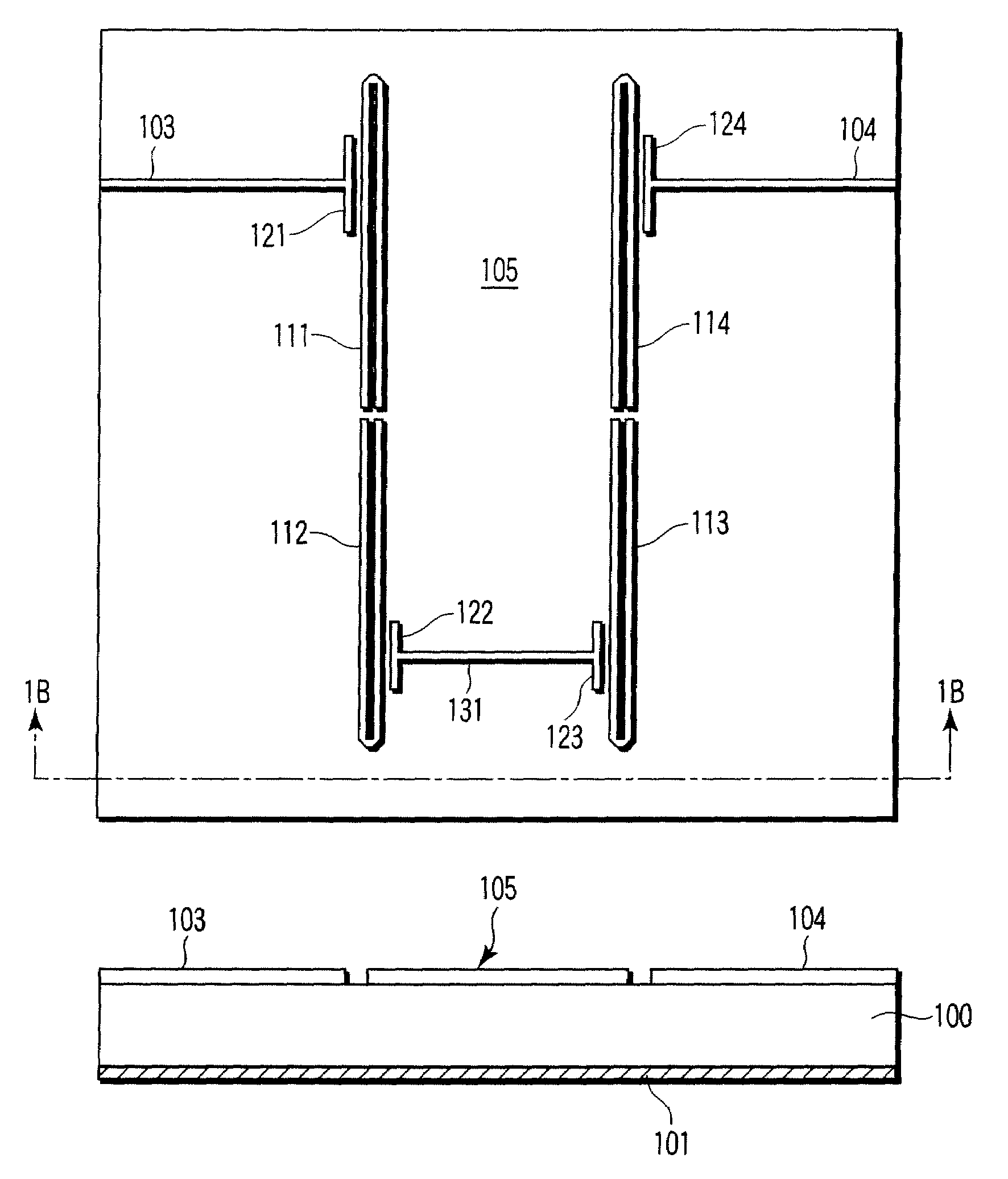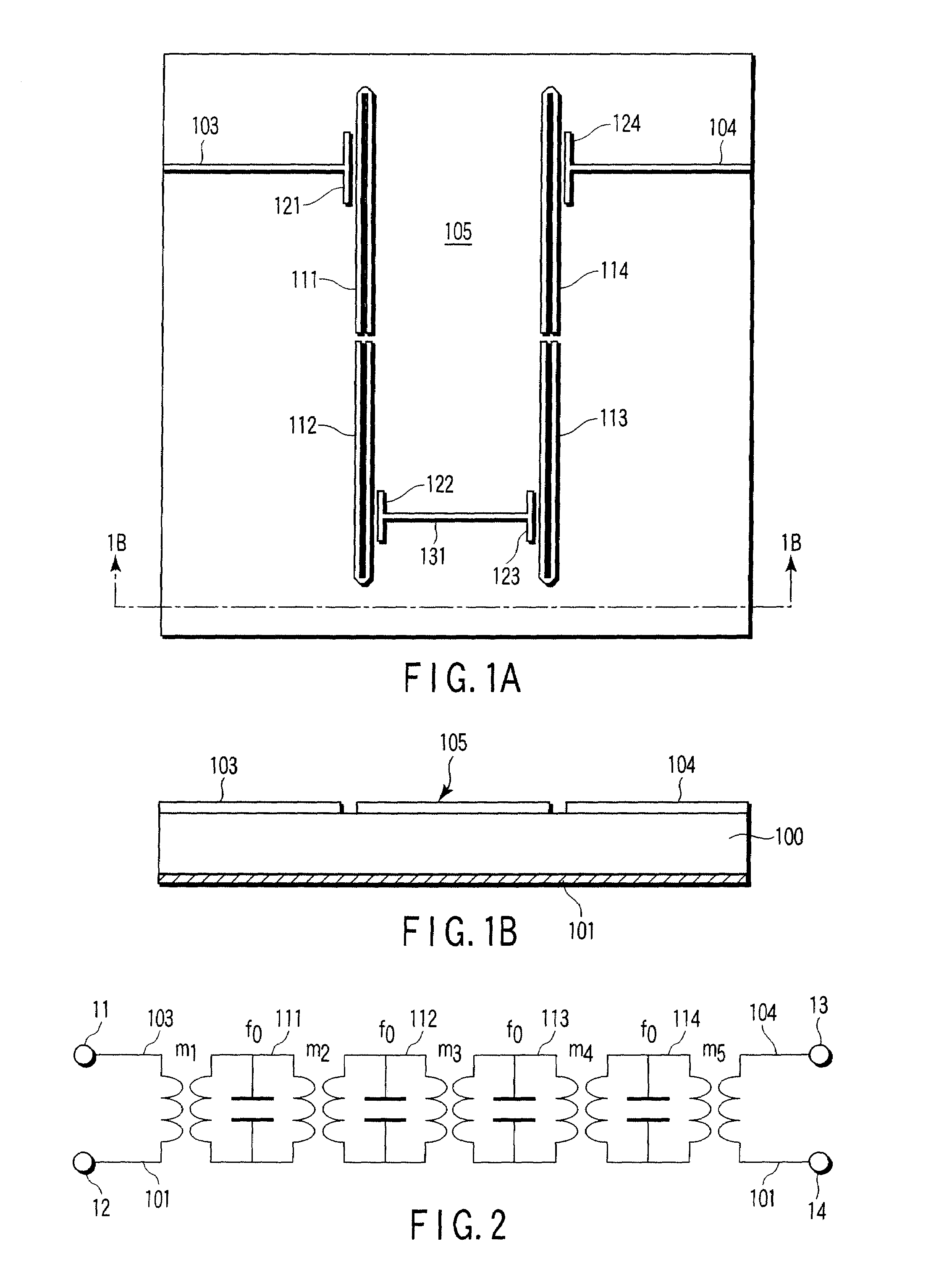Filter and radio communication device using the same
a radio communication device and filter technology, applied in coupling devices, electrical devices, waveguides, etc., can solve the problems of radiation loss dominant, difficult to realize a filter property having a steep skirt property, and increase in q values of resonators, so as to reduce radiation loss
- Summary
- Abstract
- Description
- Claims
- Application Information
AI Technical Summary
Benefits of technology
Problems solved by technology
Method used
Image
Examples
first embodiment
[0047]FIGS. 1A and 1B show the plane view and the cross-sectional view taken on line 1B-1B of the filter regarding the present invention, respectively. A ground plane 101 is formed on a rear surface of a dielectric substrate 100 and an input line 103, an output line (also called exciting line) 104 and a resonant unit 105 are formed on a front surface of the dielectric substrate 100. Each one end of the input line 103 and output line 104 extend up to end portions of the dielectric substrate 100 to get connected with a circuit placed outside the filter at the end portions of the dielectric substrate 100, respectively.
[0048]The dielectric substrate 100 is made of material, such as a magnesium oxide and a sapphire with thickness of around 0.1 to 1 mm. The ground plane 101, input line 103, output line 104 and resonant unit 105 are made of conductor material, for example, a metal such as copper, silver and gold, a superconductor such as niobium or niobium tin, or an oxide superconductor s...
second embodiment
[0071]FIG. 9 shows the frequency response property obtained by the electromagnetic field analyses of the filters in FIG. 7 and FIG. 8. The horizontal and vertical axes in FIG. 9 indicate frequencies and S parameters S11 and S21, respectively. In the analyses, it is assumed that the conductor loss and dielectric loss are ‘0’ so that the analyses view only effect of a radiation property. The filter layout in the compared example shown in FIG. 8 deteriorates the Q of the resonator because radiation is generated by the coupling element 129 placed at the voltage maximum point. This deterioration of the Q increases the loss at end portions in the passband and deteriorates a property of frequency selectivity and an insertion loss property, as shown by a broken line in FIG. 9. In contrast, the filter layout in FIG. 7 based on the present invention, since the coupling elements 121-128 are placed within the ranges of ±45° from the voltage maximum points, the influence of unnecessary radiation...
PUM
 Login to View More
Login to View More Abstract
Description
Claims
Application Information
 Login to View More
Login to View More - R&D
- Intellectual Property
- Life Sciences
- Materials
- Tech Scout
- Unparalleled Data Quality
- Higher Quality Content
- 60% Fewer Hallucinations
Browse by: Latest US Patents, China's latest patents, Technical Efficacy Thesaurus, Application Domain, Technology Topic, Popular Technical Reports.
© 2025 PatSnap. All rights reserved.Legal|Privacy policy|Modern Slavery Act Transparency Statement|Sitemap|About US| Contact US: help@patsnap.com



